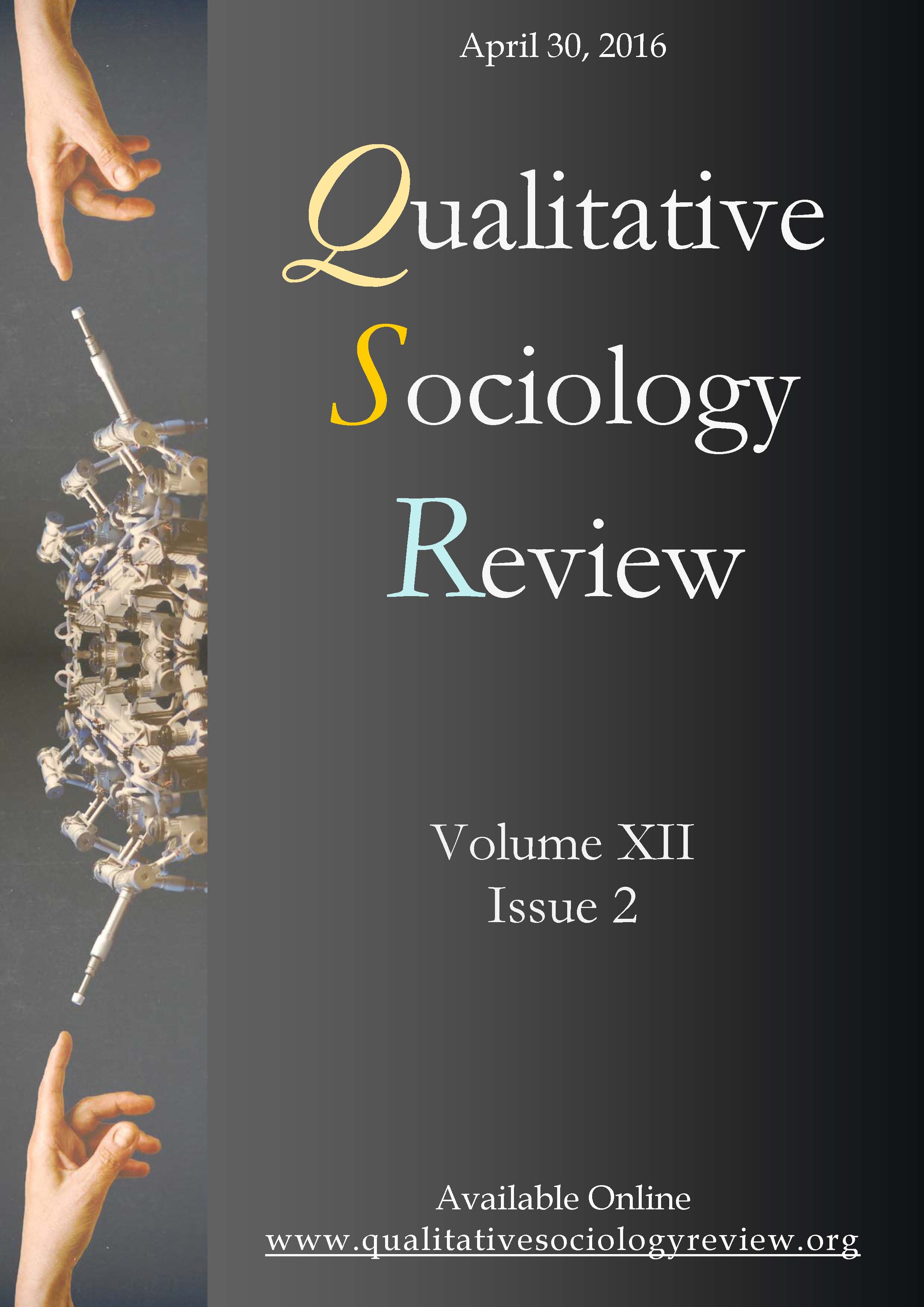Technology and Making-Meaning in College Relationships: Understanding Hyper-Connection
DOI:
https://doi.org/10.18778/1733-8077.12.2.01Keywords:
Social Interaction, Presence, Absence, Relationships, College Students, Connection, Disconnection, Intimacy, Communication TechnologyAbstract
This article explores how the use of communication technology has transformed social interactions and the sense of self that is derived from such interactions by considering the role of presence and absence in relationships among college students. Analyzing interviews with 38 participants, I explore how they construct understandings of presence, absence, connection, and disconnection within peer social groups and intimate relationships, indicating the emergence of a culture of hyper-connection. I suggest that technological developments have enabled forms of interaction that encourage frequent connection and the idealization of constant communication among participants. These findings further indicate that the normalization of hyper-connection may have impacts on relationship practices and constructions of identity among participants.
Downloads
References
Bai, Ya-Mei, Chao-Cheng Lin, and Jen-Yeu Chen. 2001. “Internet Addiction Disorder Among Clients of a Virtual Clinic.” Psychiatric Services 52(10):1397-1397.
Google Scholar
DOI: https://doi.org/10.1176/appi.ps.52.10.1397
Bellotti, Elisa. 2008. “What Are Friends For? Elective Communities of Single People.” Social Networks 30(4): 318-329.
Google Scholar
DOI: https://doi.org/10.1016/j.socnet.2008.07.001
Birkets, Sven. 1994. “The Electronic Hive: Two Views. Refuse It.” Harpers Magazine, May.
Google Scholar
Booth, Frances. 2013. The Distraction Trap: How to Focus in a Digital World. Harlow: Pearson Education Limited.
Google Scholar
Castells, Manuel. 2005. “The Network Society: From Knowledge to Policy.” Pp. 3-22 in The Network Society: From Knowledge to Policy, edited by M. Castells and G. Cardoso. Washington: Center for Transatlantic Relations.
Google Scholar
Engelberg, Elisabeth and Lennart Sjöberg. 2004. “Internet Use, Social Skills, and Adjustment.” CyberPsychology & Behavior 7(1):41-47.
Google Scholar
DOI: https://doi.org/10.1089/109493104322820101
Gergen, Kenneth. 2000. The Saturated Self: Dilemmas Of Identity In Contemporary Life. New York: Basic Books.
Google Scholar
Giddens, Anthony. 1991. Modernity and Self-Identity: Self and Society in the Late Modern Age. Stanford: Stanford University Press.
Google Scholar
Gubrium, Jaber F. and James A. Holstein. 2000. “The Self in a World of Going Concerns.” Symbolic Interaction 23(2):95-115.
Google Scholar
DOI: https://doi.org/10.1525/si.2000.23.2.95
Hur, Mann Hyung. 2006. “Demographic, Habitual, and Socioeconomic Determinants of Internet Addiction Disorder: An Empirical Study of Korean Teenagers.” CyberPsychology & Behavior 9(5):514-525.
Google Scholar
DOI: https://doi.org/10.1089/cpb.2006.9.514
Kraut, Robert et al. 1998. “Internet Paradox: A Social Technology That Reduces Social Involvement and Psychological Well-Being?” American Psychologist 53(9):1017-1031.
Google Scholar
DOI: https://doi.org/10.1037/0003-066X.53.9.1017
McKenna, Katelyn, Amie Green, and Marci Gleason. 2002. “Relationship Formation on the Internet: What’s the Big Attraction?” Journal of Social Issues 58(1):9-31.
Google Scholar
DOI: https://doi.org/10.1111/1540-4560.00246
McLuhan, Marshall. 1964. Understanding Media: The Extensions of Man. New York: McGraw-Hill.
Google Scholar
McLuhan, Marshall and Quentin Fiore. 2001. The Medium Is the Massage. Corte Madera: Gingko Press.
Google Scholar
Palfrey, John G. and Urs Gasser. 2008. Born Digital: Understanding the First Generation of Digital Natives. New York: Basic Books.
Google Scholar
Putnam, Robert. 2001. Bowling Alone: The Collapse and Revival of American Community. New York: Simon & Schuster.
Google Scholar
DOI: https://doi.org/10.1145/358916.361990
Quan-Haase, Anabel and Barry Wellman. 2005. “Hyperconnected Net Work: Computer Mediated Community in a High- Tech Organization.” Pp. 281-334 in The Corporation as a Collaborative Community: The Reconstruction of Trust in the Knowledge Economy, edited by Ch. Heckscher and P. S. Adler. Oxford, New York: Oxford University Press.
Google Scholar
Reid, Donna and Fraser Reid. 2004. “Insights Into the Social and Psychological Effects of SMS Text Messaging.” Retrieved July 23, 2013 http://courses.educ.ubc.ca/etec540/May08/suz/assests/SocialEffectsOfTextMessaging.pdf
Google Scholar
Sanders, Christopher E. et al. 2000. “The Relationship of Internet Use to Depression and Social Isolation Among Adolescents.” Adolescence 35(138):237-242.
Google Scholar
Siomos, Konstantinos and Nikiforos Angelopoulos. 2008. “Internet Addiction Disorder.” Psychiatrike 19(1):52-58.
Google Scholar
Taylor, Steven J. and Robert Bogdan. 1998. Introduction to Qualitative Research Methods. New York: Wiley.
Google Scholar
Wellman, Barry. 2001. “Physical Place and Cyberplace: The Rise of Personalized Networking.” International Journal of Urban and Regional Research 25(2):227-252.
Google Scholar
DOI: https://doi.org/10.1111/1468-2427.00309
Young, Kimberly S. 1998. “Internet Addiction: The Emergence of a New Clinical Disorder.” CyberPsychology & Behavior 1(3):237-244.
Google Scholar
DOI: https://doi.org/10.1089/cpb.1998.1.237
Zhao, Shanyang. 2003. “Toward a Taxonomy of Copresence.” Presence: Teleoperators and Virtual Environments 12(5):445-455.
Google Scholar
DOI: https://doi.org/10.1162/105474603322761261
Downloads
Published
How to Cite
Issue
Section
License

This work is licensed under a Creative Commons Attribution-NonCommercial-NoDerivatives 4.0 International License.











